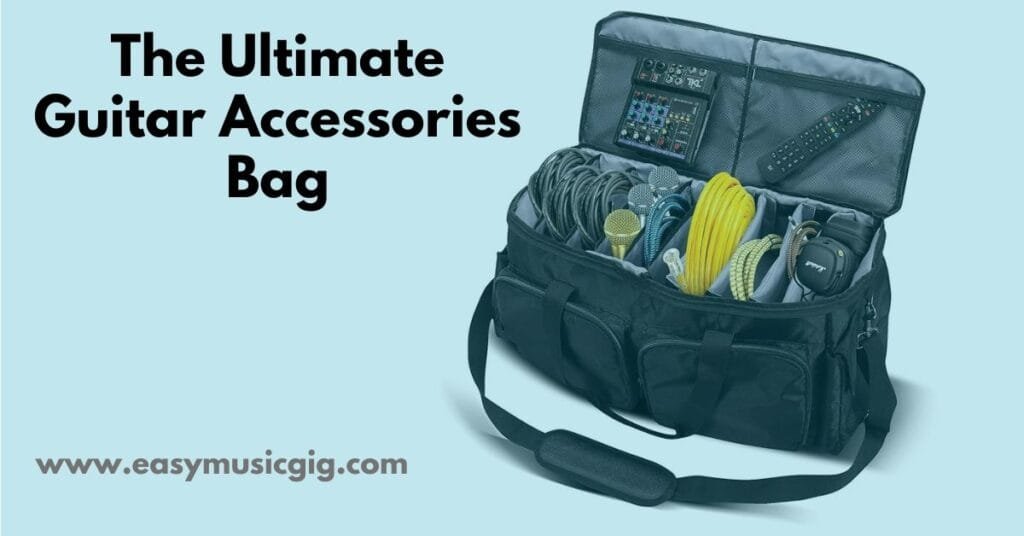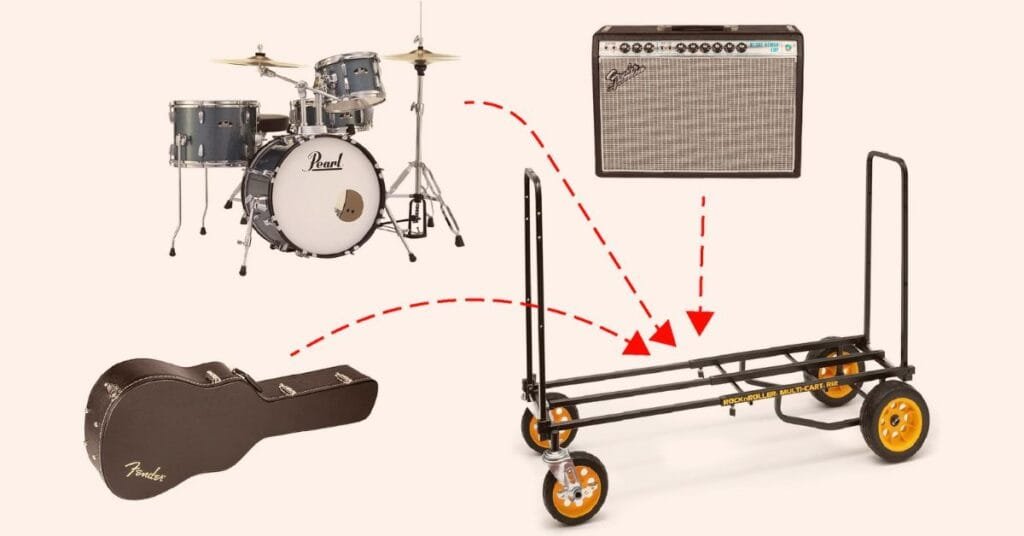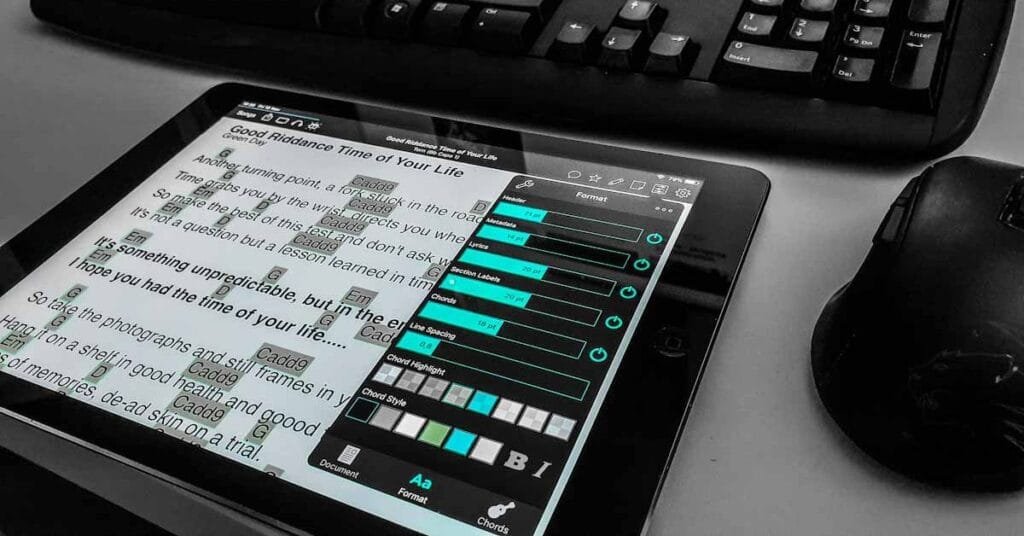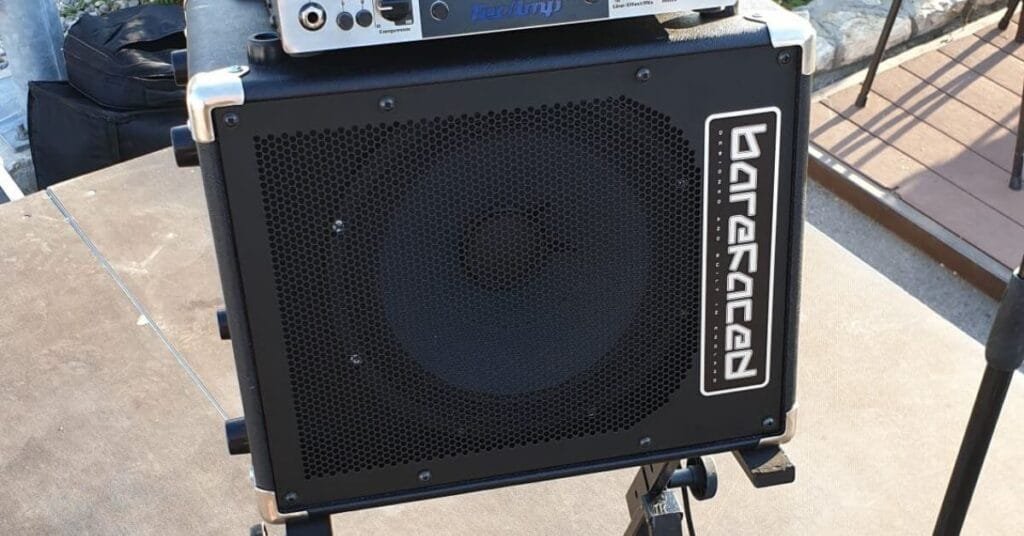The Ultimate Guitar Accessories Bag
Whatever kind of gig you play, there is a bag (or case) that should follow you wherever you go. Everything that’s on your guitar accessories checklist should be in it. It takes a lot of trial and error before you realize what a musician’s gig bag should have inside it. Of course, you can use a guitar accessories bag/backpack instead of a case for your essential guitar accessories.
Some musicians refer to this case as the cable case, which is a different case where all the microphone, speaker, and power cables are. If you were to combine these two cases, it would become too heavy, big, and hard to organize.
The following is a guitarist/singer’s point of view. Remember, if you plan ahead, this element of your gigging gear will save you hours of potential frustration.
Think of it this way, what do you need on every gig, whether you’re playing on your own PA, or there is an in-house one? Is it a gig where you play the electric guitar and sing, or an acoustic singer/songwriter kind of gig? Whatever type of gig it’s going to be, you have to be prepared.
The combinations of elements of the “holy grail” of cases are endless, but some things, you just can’t manage without.
Essentials for Guitar
Let’s start with the essentials, guitar-wise.
Cables
The first item on your guitar accessories checklist should always be cables.
Every guitarist needs a signal cable for either an electric or acoustic guitar. Maybe you play a classical or acoustic guitar with no electronics, then you’ll need a condenser microphone if not provided.
If it’s an electric or acoustic guitar, you will probably have pedals, or multi-effects between your guitar and amp or stagebox. That means you need one cable from guitar to pedals, one from pedals to amp, and most importantly one more (2 even better) for spares. That adds up to 4 cables. If you use the “4CM” (four cable method) which is used when you have a send/return signal device then you will need 6 cables altogether.
The lengths of your cables are also a parameter you should wisely consider, therefore some cables don’t need to be that long.
If you have pedals in front of you, and you’re not Chuck Berry, a 3-meter cable from guitar to pedals is usually enough for small gigs, but you will need a 6-plus-meter cable for a bigger stage if you need to tweak your amp which is further in the back.
When you are using guitar pedals, you need at least 1 or 2 spare patch cables. If you have enough room in your pedalboard you can keep those inside the pedalboard. It’s a rule of thumb to keep spare parts in the most logical place. If you have room, keep your spare patch cables, velcro ties, adaptor,… in your pedalboard.
Power adapter
1 or 2 Power adapters should always be a part of your guitar accessories case. If your pedalboards’ power bank for some reason doesn’t work, a 9V adapter in combination with a daisy chain power supply cable with a minimum of 3 outputs will still make your main pedals work.
Daisy chain
These are not expensive and not too big. One or even two with 3 or more outputs can save your gig.
I like to have 2 power adapters and 2 daisy chains with 3 outputs. This way your gear is more modular, meaning you can use them in two different parts of a bigger pedalboard where a 6 output daisy chain couldn’t reach all the pedals you want to use.

DI box
No guitar accessories checklist is a good one without a DI box
Your amp goes dead and you send your pedals’ signal to the main mixer. What happens? Your guitar sound is dead, with no warmth in it. Any type of DI box will do the trick, and they have an XLR output, which makes the signal good enough for the mixer. Look for a small DI with a cabinet simulator built in, that will make the sound even better.
The Mooer Micro DI saved me a couple of times. Even my bass player used it a couple of times when he didn’t bring his amp to the gig.

All-in-one pedal
What if your multi-effect doesn’t work, or the chorus or delay pedal in your pedalboard fails?
Having a small multi-effect pedal can save your gig. A small pedal like the Zoom Multi Stomp MS-70 CDR is a budget-friendly one, and it can use up to 6 effects at once, which is more than enough. Just prepare 2 or 3 mostly used settings that you use on your usual pedalboard in advance, and you’ll be good. There is also the Zoom Multistomp MS-50G which is more oriented towards amp simulators and distortion/overdrive effects.
Strings
Probably one of the most important things in your arsenal of spares is having a decent amount of strings. One additional set of your usual gauge strings, and a couple of higher strings like E, B, and G are a good-to-go start. Having 2 additional sets is even better.
String winder
If you’re in a hurry to change a string, a string winder will save the show.
Clip-on Tuner
Nowadays many of us use a tuner in the form of a pedal or have one built in a multieffect. If they don’t work, a clip-on tuner will do the job.
Strap
This is an item that many musicians overlook. You may forget to take one for some reason, it can get torn or you’re bassist forgets to take one.

Picks
Picks or plectrums. Have at least 5 to 6 picks of different thicknesses and materials.
Tip: keep spare picks in 2 or 3 different places, gig bag, wallet, and guitar case.
Tape
You should always have some duct tape. You never know what the venue where you’re playing is like. Sometimes you have to get power from a place where people are either passing by or the audience is in the way. You have to fix the power cable to the floor.
Also, you will need some electrical tape to protect any bare or loose wires.
Batteries
Think of all the things that use batteries in your equipment. Guitar pedals, clip-on tuners, electro-acoustic guitars, the list goes on, they all use batteries. Always have at least one spare of each type, 9V, AA, AAA, and button-type batteries.
Light
When you’re gigging in bars or nightclubs, light is usually very low. To make things easier you can use a small torch or head led lamp. Mixers that are used in small bands don’t have any light on them, so In that case the best thing you can do is have a clip-on gooseneck led lamp which you can mount on the mixer or on anything close to the mixer.

Tools
No gig bag would be complete without a toolkit. Keep it simple. If you often use screwdrivers or a pair of pliers, pack them as separate items, but if you’re having them “just in case” buy a multi-tool which is much smaller and versatile.
You should also have a boxcutter, Allen keys, small tape, a piece of wire, and rope.
Capo
I personally have my capo just for one song, Folsom Prison Blues. The man in black sang it in E which is too low for me, so I just put the capo on the 1st fret and sing it in F.
I had a situation where we finished a set and someone was yelling “Wonderwall”. How can you refuse that?
Slide
If you use a slide, you probably have one in your guitar case. But what if you lose it or it’s a glass one and it breaks? Have a spare in your guitar accessories bag if you use a slide a lot.
Fuses
Have one just in case your mixer’s fuse doesn’t work.
Foldable music stand
The foldable type is not big, but may not fit in the bag, but always have one in another case if possible.
Business Cards
Your gig is over and someone comes backstage to say how a wonderful time they had and asks you for a business card.
If you don’t have one on you, it’s so unprofessional. Always have at least 5 business cards with you.
Promo CDs or USB Stick
The same goes for CDs. Nowadays, people rarely have CD players, you can always send them links to your music, but giving them something material like a USB stick is much better.

Essentials for Vocalists
These items are really not part of a guitar accessories bag, but very often an instrumentalist uses a microphone for singing or to mic an amp.
Microphones
If you are a singer (main or back vocals) at the top of your bag, in a pouch or small case you should have the microphone that you use, and at least 1 more microphone. Even if you don’t sing at all, a spare Shure SM57 will do a very good job as a vocals microphone for someone else in the band, or for amps that need to be mic’d.
Microphone clamp
Normal or clip-on type, it doesn’t matter, just be sure you have 1 or 2 for spares.
Adapter for microphone clamp
Microphone stands usually have 2 thread sizes, 3/8 inch and 5/8 inch.
If you have a wider thread size on your microphone clamp than on the stand, you need a 3/8 inch internal thread and a 5/8 inch external thread adapter. Usually, clamps have a wider thread and you get an adapter with it, or with the microphone. If your clamp has a 3/8 inch thread, and the stand has a wider one, you need the opposite kind of adapter, with a 5/8 inch internal thread and a 3/8 inch external thread. That is a very rare situation, like with the Sennheiser MD421 microphone which has a special clamp that’s attached to the mic itself.
Short mic cable, if using vocal pedals
In case you are using any kind of device for your vocal that is either on the floor in front of you or on your mic stand, use a short XLR cable to make things easy and neat. A one to three-meter length cable is enough.

Keep things organized
It’s not all about what to have in your gig bag or guitar accessories bag, it’s also about how everything is organized and labeled.
Located on top you should have items that you use on every gig, like cables, microphones, and power strips. Underneath you should have items that are used only as spare items.
A very good practice is to have smaller items in a few small individual boxes sorted by type of use. For instance, in one small container, put all your adapters, and in a separate pouch put all your tools and a boxcutter, and in a third one put guitar strings. Get the idea?
Gig Bags, Cases, Backpacks
All items mentioned above can be stored either in a special gig bag or in a small tool case or flight case.
If you are low on space in the van or car, a case would be a better option in my opinion. Not only that it’s more sturdy but packs better in the car.
Conclusion
Try to group things in your guitar accessories bag in a logical, practical manner. You can always put some of your guitar-related items like strings, capo, slide, and strap in your guitar case.
There are other items you need with you on gigs, like water, towels, or food. I think these should be in a separate bag or even better backpack which I call the private gig bag. It’s just better to keep technical and non-technical stuff separated.
What are your gig bag essentials, how do you organize things inside? Please leave a comment!



